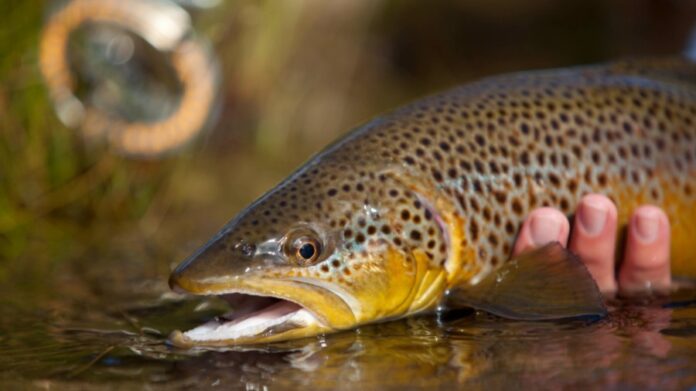Written By: Dave Danley, Falcon’s Ledge
All photos by Falcon’s Ledge
There are many great trout rivers to fish in Utah, but the Duchesne drainage—flowing out from Ashley National Forest—is one of our favorites. Not only is the scenery amazing, but this beautiful river and its tributaries are teeming with native cutthroats, along with wild brook trout, rainbows, and browns. During the summer months, the Duchesne has some great hatches. In late June, green drakes emerge in large numbers, and in July, stonefly and caddis hatches are an almost-daily occurrence, resulting in consistent action throughout the season. Here are our top 5 most productive flies for summer fishing on the Duchesne:

In late June, Northeastern Utah sees great green drake hatches, and the trout just feast on these big mayflies, making for some of the best dry-fly fishing of the year. This hatch can be imitated with many different patterns, but believe it or not, we prefer an olive-bodied parachute hopper. We like this pattern because its tall profile and high buoyancy are ideal for the drake hatch, plus it can be used all the way into early fall to imitate grasshoppers while chasing big brown trout.
2. PMX (sizes 12-14)

The PMX is a great pattern for Northeastern Utah from late June all the way to October. We use olive-bodied versions to imitate green drakes in late June, and then we will mix in some royal versions in July and early August when the stoneflies start to hatch in abundance. During the fall, the PMX makes a reasonable grasshopper imitation as well.


This versatile pattern is effective on the Duchesne and its tributaries year-round. In larger sizes, it’s good at imitating caddis larvae, and in smaller sizes, midge larvae. It also makes a great dropper when used in combination with a hopper or PMX dry fly.

The Copper John is a very well-known and effective nymph on many western trout rivers–and the Duchesne is no exception–but for whatever reason, we find that the rubber-legged variety is the most productive here.


This fly’s low profile is well-suited to catching picky fish, especially in areas with slower current. We use this pattern throughout the year, gradually increasing the size as the water gets warmer.
Dave Danley is operations manager for Falcon’s Ledge in Altamont, UT.
Credit: Source link































